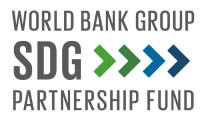Engineering Inclusivity: Infrastructure for everyone
Meet the Gender & Infrastructure Toolkit
Tools for Measuring Results-based Equality
Learn from proven how-to guides, tools and strategies covering all aspects of operations.
Ready to learn more?
Get in Touch
Adriana Eftimie
Gender and Infra Team Lead
Katherine Heller
Senior Gender Consultant
What do toolkit users say?
GET INSPIRED

Alice Darko,
Ghana National Chamber of Commerce & Industry, and TOT Beneficiary of the Canada-IFC LED Program

Maria Ezpeleta,
Oxfam Gender Advisor, Extractive Industries


